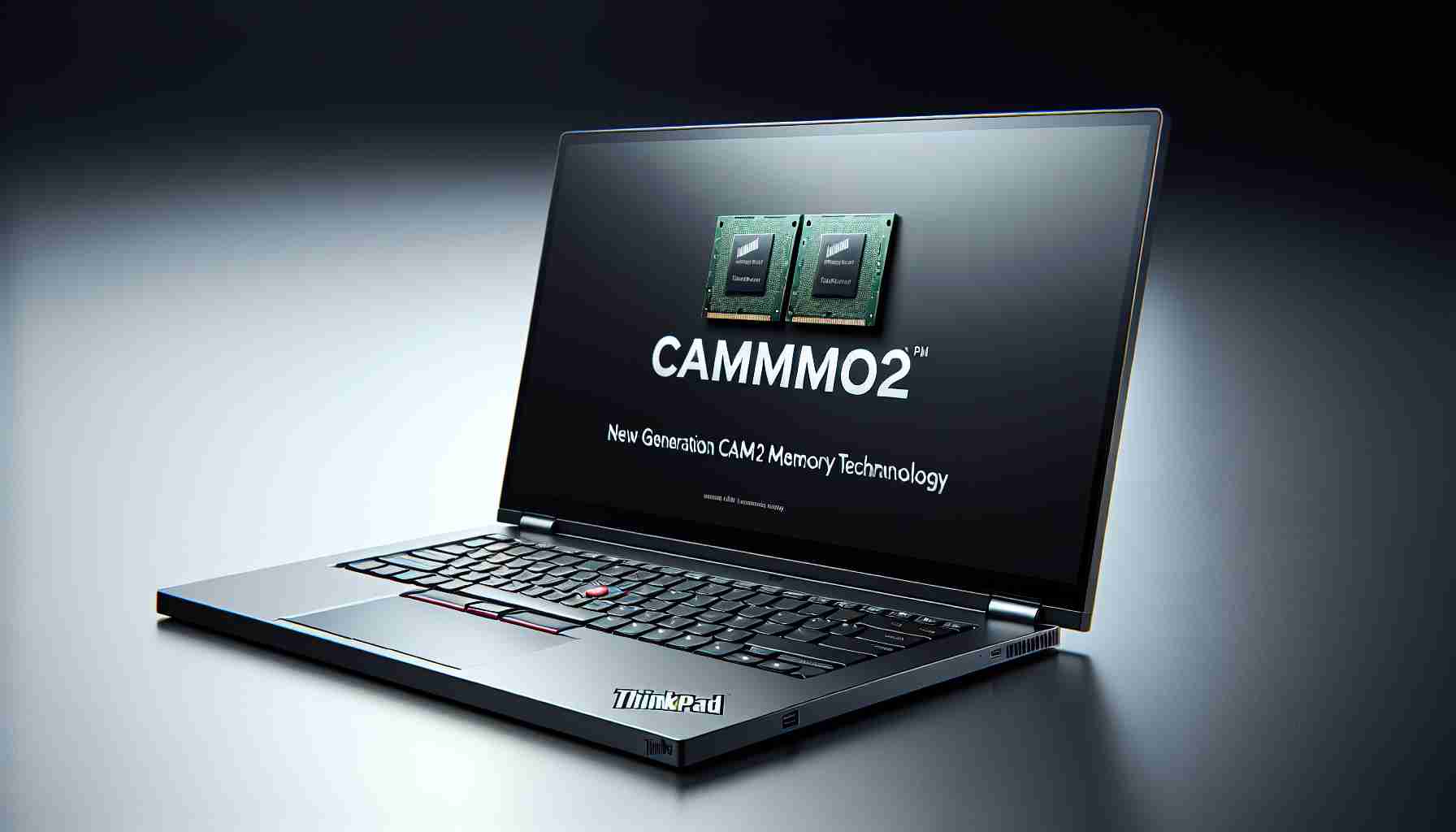Lenovo Leads with First Laptop Featuring Advanced CAMM2 Memory
The technological landscape for laptops is experiencing a remarkable evolution, with Lenovo at the forefront by incorporating the novel CAMM2 memory into its newly announced ThinkPad P1 Gen 7 mobile workstation. This cutting-edge memory standard is set to replace the older SO-DIMM format and has been formally accepted by JEDEC, the global leader in microelectronics standards.
Lenovo’s latest offering doesn’t only promise innovation but also efficiency, as the laptop’s 64GB of LPDDR5x CAMM2 memory has been developed in collaboration with Micron. This memory is noted for its ability to use up to 61% less active power than its DDR5 SO-DIMM counterparts. Moreover, Lenovo assures customers that despite its significantly smaller size, 64% more compact to be precise, CAMM2 will not compromise on performance. It is explicitly engineered to provide a dual-channel experience from a solitary module, enhancing bandwidth capabilities.
The ThinkPad P1 Gen 7: A Powerhouse of Performance
Aside from memory advancements, the ThinkPad P1 Gen 7 positions itself as a robust workstation, fully equipped for AI tasks and heavy computing requirements. It is the inaugural product to include Intel’s ultra-performance core, boasting the Meteor Lake CPU – the Intel Core Ultra 9 185H, complemented by Nvidia’s Ada Lovelace graphics. These specifications ensure that users have a powerhouse at their disposal.
Storage and connectivity also receive a significant boost with up to 8TB of NVME storage and the latest Wi-Fi 7 technology. The machine also offers an array of ports, including HDMI 2.1, to cater to various peripheral needs. With a promised starting price of $2,619 and an anticipated launch in the coming month, the ThinkPad P1 Gen 7 is set to redefine the efficiency and power of portable computing stations.
Understanding CAMM2 Memory Technology
CAMM (Compression Attached Memory Module) denotes a novel technology and format for memory modules in computing systems. CAMM2 memory is noteworthy for its higher density and efficiency compared to traditional SO-DIMM modules.
Advantages of CAMM2 Memory:
– Space Efficiency: The CAMM2’s more compact design allows for more space inside the laptop for other components or for smaller form factors.
– Energy Use: As mentioned, it uses significantly less power, which can lead to longer battery life and reduced heat generation.
– Performance: Its dual-channel design from a single module promises improved bandwidth and potentially faster data processing.
Disadvantages of CAMM2 Memory:
– Compatibility and Adoption: As a new technology, it might face slow adoption rate by other manufacturers and could lead to compatibility issues with existing infrastructure.
– Cost: Early adopters of new technology often face a premium price, and it is not clear if CAMM2 modules will be more expensive than traditional memory.
Key Questions and Answers:
– Q: Why is Lenovo switching to CAMM2 memory instead of sticking with SO-DIMM?
– A: Lenovo aims to innovate by providing more efficient, higher performance, and smaller size memory modules, which CAMM2 claims to offer.
– Q: Can users upgrade the CAMM2 memory in their Lenovo ThinkPad P1 Gen 7?
– A: It is not mentioned in the provided text, but typically, memory upgrades depend on the system’s design; soldered memory cannot be upgraded, whereas removable modules can be. Customers should verify this with the product’s specifications.
– Q: Will this CAMM2 technology become an industry standard?
– A: Since JEDEC, the global leader in developing open standards for the microelectronics industry, has formally accepted it, there is potential for this. However, industry-wide adoption will take time and depend on other manufacturers’ support.
Related Links:
For further information on Lenovo’s latest innovations and offerings, you might consider visiting Lenovo’s official website at Lenovo.
In summary, the Lenovo ThinkPad P1 Gen 7 aims to lead the market with state-of-the-art CAMM2 memory technology, offering a blend of efficiency and performance but also poses challenges in terms of compatibility and adoption by other manufacturers. The success and impact of CAMM2 technology will depend on its real-world performance, cost-effectiveness, and the rate of adoption within the tech industry.
The source of the article is from the blog elperiodicodearanjuez.es
